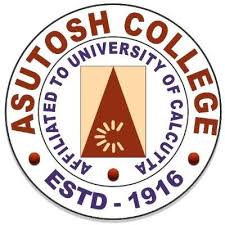Overview
Asutosh College, since its inception in July, 1916, has been a leading centre of education in Kolkata. As it enters its hundredth year of existence, let us step back in time and retrace the steps of its evolution from an Intermediate College in South Calcutta to its present position as a premier institute of Undergraduate, Postgraduate Studies and Research, not only of Kolkata, but also of West Bengal and eastern India. Established by Sir Asutosh Mukherjee, one of the pioneers of modern education in India, the college was initially known as South Suburban College, following the up gradation of the South Suburban School into an Intermediate College. What occasioned its foundation was the closing down of two colleges in and around Bhowanipore – the London Missionary Society Institution and Doveton College (Bishop’s College) in 1911. The General Committee of South Suburban Group of Schools (estd. 1872) with Sir Asutosh as the then President, realizing the urgent need for a college in South Kolkata (or, Calcutta as it was then known) applied to the British Government on 12 February, 1915, for permission to set up an Intermediate College. Due to a variety of reasons, including financial, permission was not forthcoming initially, but finally, in May of the following year, the authorities relented and affiliation up to the Intermediate standard for Arts was granted with effect from the 1916-1917 academic session of Calcutta University. With some 250 students on its rolls, South Suburban College with Sir Asutosh as the President of its ten-member Governing Body, began its journey in a two-storied building at 26, Lansdowne Road. The subjects then taught in the college included English, Bengali, Sanskrit, Logic, History, Mathematics and Botany. By the following year itself, the burgeoning student strength forced the College authorities to relocate to more spacious and conveniently situated premises at Bijni House, 147, Russa Road (S. P. Mookerjee Road today) from where it continued to operate till September, 1936. The Chittaranjan National Cancer Institute is now located at the site. In October, 1917, the College administration applied for the University affiliation to be extended to the B.A. Pass standard in English, Bengali, Sanskrit, Mental and Moral Philosophy, History, Political Economy and Political Philosophy and Mathematics which was granted with effect from the 1917-1919 academic session. Needless to say, up gradation to the Honours level was the next goal to the achieved, in pursuance of which the authorities applied for and obtained permission to start the Honours Course in English and Philosophy in 1921-1922. Affiliation in Geography to be taught up to the Intermediate standard was also obtained while those for Chemistry and Physics were obtained from the 1922-1923 academic session. I.Sc. classes began in the same year. The B.A. Honours affiliation in Mathematics was granted with effect from the 1923-1924 academic session, while B. Sc. Honours Course affiliation in Mathematics and B. Sc. Pass Course affiliation in Botany and Chemistry were granted from the 1924-1925 and 1925-1 926 academic sessions respectively. Affiliation in B.Sc. Pass Course in Physics, and B.A. Pass Course in Bengali and Botany were obtained from the 1929-1930 academic session. Affiliation in I.A. Civics was obtained in the 1930-31 academic session. From the 1932-1933 academic session Economics at the Honours level began to be taught in the College. The Honours Course in History and the Intermediate Course in Bengali for girl students commenced with the 1933-1934 academic session. Sanskrit Honours began to be taught from the 1936-37 session while the Intermediate standard affiliation for Zoology and Biology was obtained with effect from the 1938-’39 academic session. Affiliation for Bengali Honours was obtained in 1939-1940. Meanwhile, on 25 May, 1924, Sir Asutosh passed away in Patna. As Calcutta and the whole of Bengal mourned his passing away, the College attempted to come to terms with the untimely loss of its guiding spirit. On 15 June, 1924, South Suburban College was renamed Asutosh College in memory of its Founder-President. In the able hands of Dr. Syamaprasad Mookerjee, Sir Asutosh’s son, and a towering personality in his own right, who was elected President of the College Governing Body, the College witnessed a fresh spurt of development. On 30 March, 1927, Asutosh College came to be registered under the Societies Registration Act of 1860. As the college grew, in size and strength the need for its own space grew likewise. In 1929, the Calcutta Corporation headed by Mayor Netaji Subhas Chandra Bose, in response to an appeal made by the Asutosh Memorial Institute, leased a portion of Hazra Park for a token fee of Re. 1/- to the Institute for the construction of a new building to house the College, a library and an auditorium. Built with generous financial support of many eminent citizens the building was completed in 1935 and soon became an imposing landmark of the city. The journey that began from the leafy precincts of 26, Lansdowne Road, with a brief stopover at Bijni House, continues to this day from this grand edifice situated on 92, Syamaprasad Mookerjee Road, on the northern flank of Jatin Das Park, the erstwhile Hazra Park.
Courses
Admissions
Scholarship
Placement
Cuttoff
Campus
-
College Type Public
-
Established In 1916
-
Max. Package 8 LPA
-
Fee Range 15K-1.5L
-
Courses Offered 2
-
NIRF Ranking 21
-
Total Faculty 15
-
Total Intake 300

